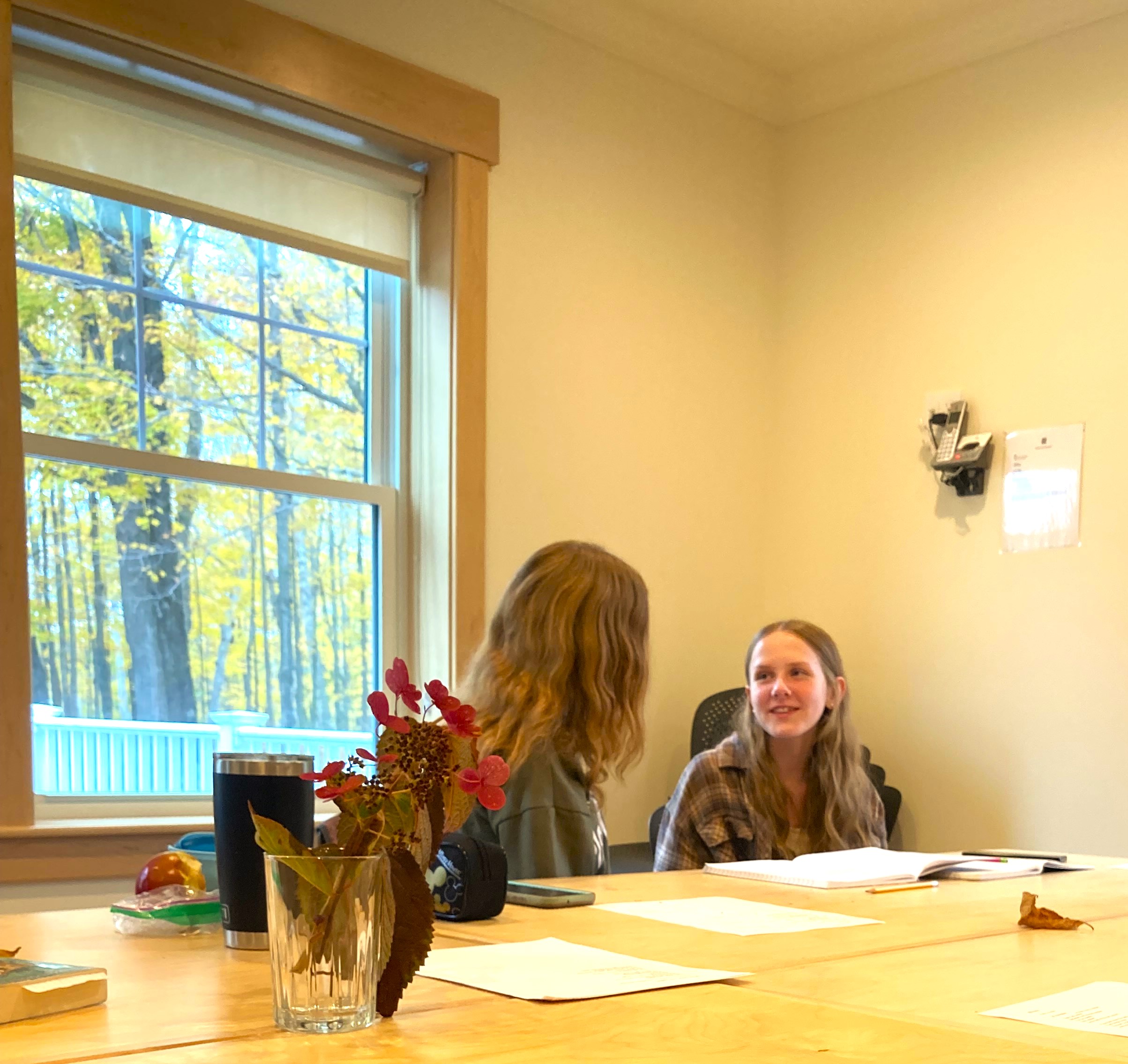 Over the last few weeks students in the Monson Arts High school Program have been settling into the sessions led by Alan Bray and Dawn Potter. And they’ve been busy, generating drawings and lines of words, listening to instruction but also jumping into the creative stew, challenging themselves to produce narratives and images, editing and erasing only to rewrite and reform the words and sketches, all while getting feedback and encouragement. After getting the idea of how the classes are run, students now get to dig in with the realization that this is their time to learn how to express their creative abilities.
Over the last few weeks students in the Monson Arts High school Program have been settling into the sessions led by Alan Bray and Dawn Potter. And they’ve been busy, generating drawings and lines of words, listening to instruction but also jumping into the creative stew, challenging themselves to produce narratives and images, editing and erasing only to rewrite and reform the words and sketches, all while getting feedback and encouragement. After getting the idea of how the classes are run, students now get to dig in with the realization that this is their time to learn how to express their creative abilities.
Writing
For session three in the writing portion of the program, students were greeted with a quote from the great 19th century American poet Walt Whitman: Do I contradict myself/Very well then I contradict myself/(I am large I contain multitudes). To further that idea Dawn placed dead leaves on the writing tables, an object that can be seen as both beautiful and ugly. All of this was to emphasize that all writers contain contradictions, and that it was important not to get hung up on them but to actually use the contradictions that appear in your writing as the energy to form your stories and poems.
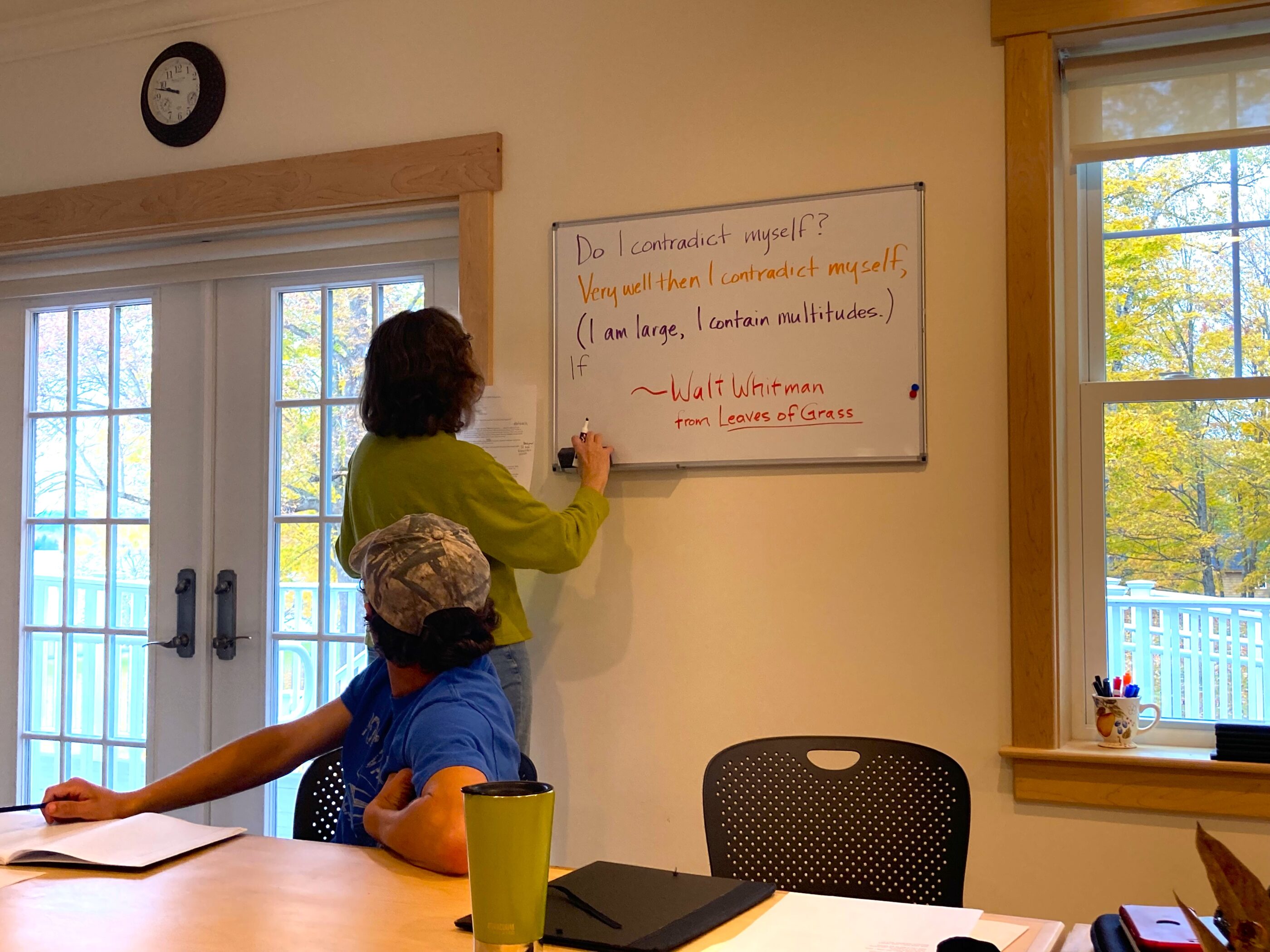 Later student’s paired off from different schools with one student of the pair creating “If” sentences and the other student following that with “Then” sentences for 30 mins, playing off the theme of contradictions and cause and effect. They then took turns reading them outloud to the rest of the class with Dawn talking about how different each group approached the exercise and how it created interesting results. Then each individual picked one of the “If/then” for their partner to do a 15 minute writing exercise utilizing the ideas of the previous exercise lines.
Later student’s paired off from different schools with one student of the pair creating “If” sentences and the other student following that with “Then” sentences for 30 mins, playing off the theme of contradictions and cause and effect. They then took turns reading them outloud to the rest of the class with Dawn talking about how different each group approached the exercise and how it created interesting results. Then each individual picked one of the “If/then” for their partner to do a 15 minute writing exercise utilizing the ideas of the previous exercise lines.
After many continuous interconnected writing prompts students and teachers wrote a poem together using some of the themes generated from previous exercises.
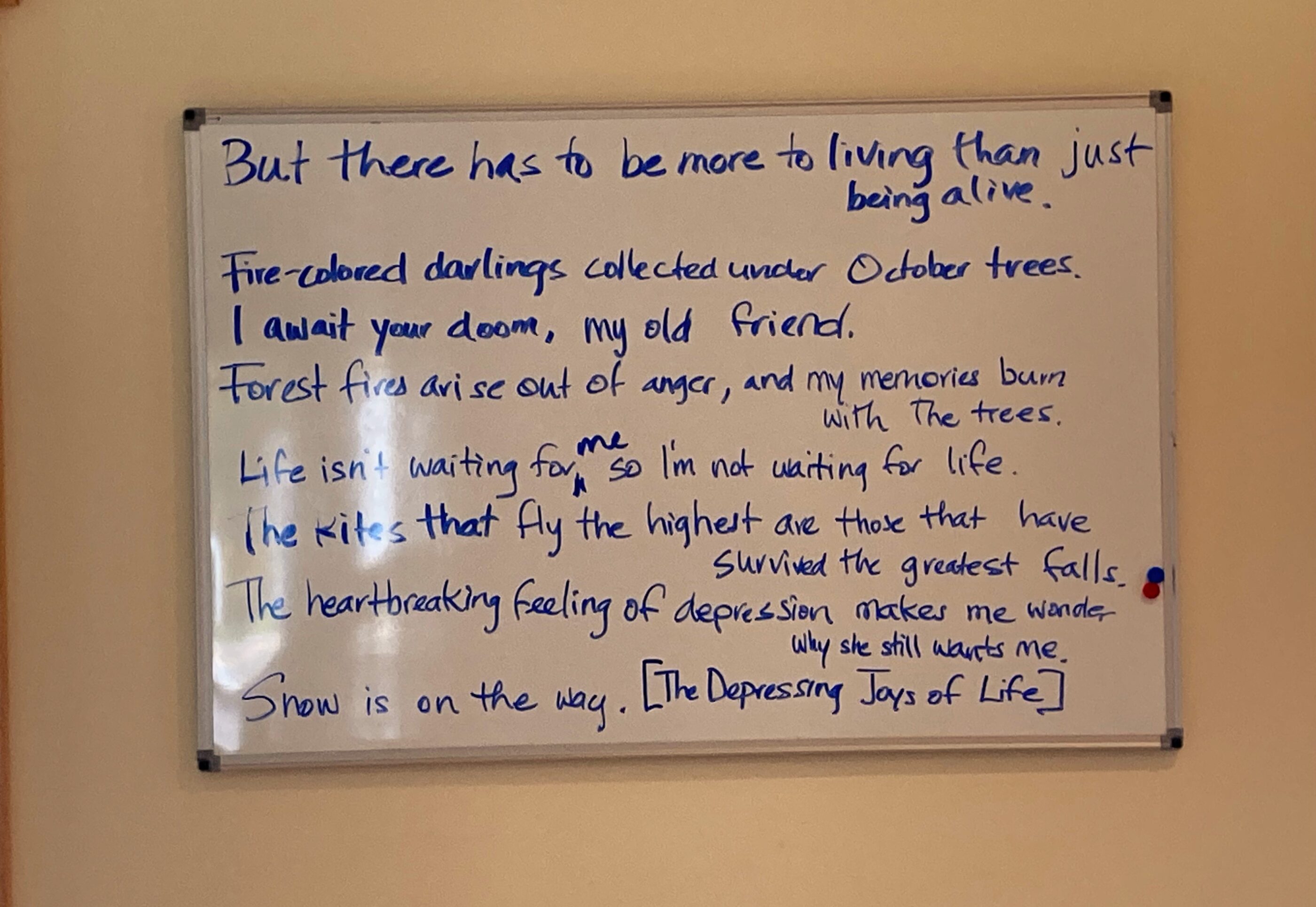 Session four for the writing program was focused on finding and writing details in stories and poems to make them more interesting. Examples included a synopsis of the book, Empire of the Summer Moon, about the Comanche native American tribe, and an excerpt poem from Shakespeare’s Macbeth, the later read by Greenville student Gabe, who has an excellent reading voice. With Dawn pointing out specific individual details in each line, she created a discussion around it where students took turns reacting to what they were noticing. This was followed by a 15 minute writing stint where students took details from the Macbeth piece and created their own work.
Session four for the writing program was focused on finding and writing details in stories and poems to make them more interesting. Examples included a synopsis of the book, Empire of the Summer Moon, about the Comanche native American tribe, and an excerpt poem from Shakespeare’s Macbeth, the later read by Greenville student Gabe, who has an excellent reading voice. With Dawn pointing out specific individual details in each line, she created a discussion around it where students took turns reacting to what they were noticing. This was followed by a 15 minute writing stint where students took details from the Macbeth piece and created their own work.
The rest of the class was centered around team narrative building where students pair off to create a story or poem with Dawn asking students, “how did you figure out how to write this story as a team,” again with a focus on creating details.
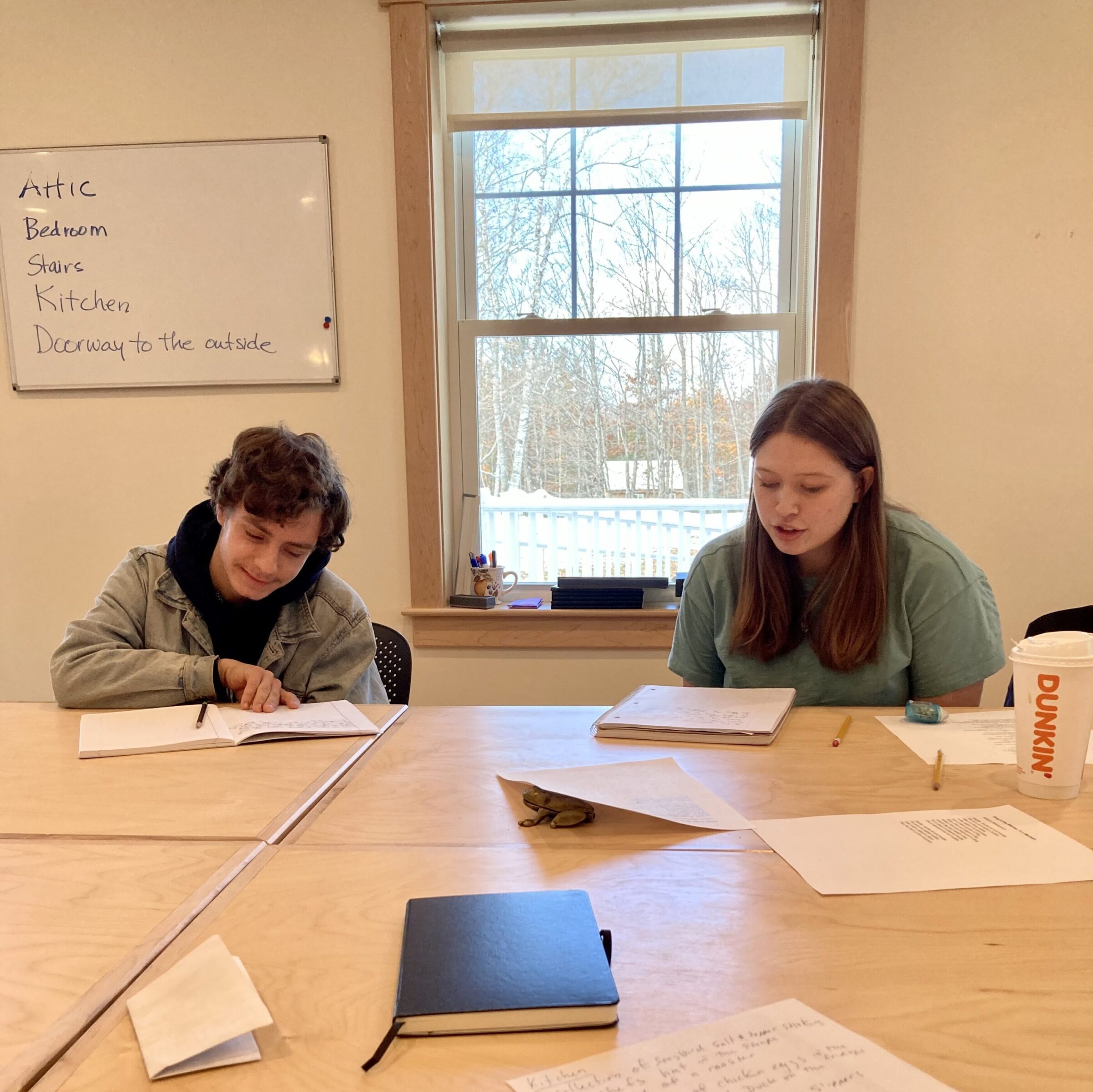
Visual Arts
The visual arts picked up where they left off, using the objects they had gathered at the site of the old hotel in Monson and looking at the work they created during the previous section. By coming back to last session’s experience and continuing to work on project sketches and drawing of nature, they were able to peel back the layers, allowing for deeper understanding of forms and the non linear shapes the forest affords the artist.
This included doing quick sketches of found stick “letters” (sticks shaped like letters), looking at the intersection of a familiar shape and an organically grown piece of nature.
In addition to practicing natural forms, Alan led students in making and preparing gesso panels. “Gesso is a mixture of a glue solution and a chalk, together with the optional addition of a white pigment for added brightness. It is used to prime a surface to prevent the paint from soaking into the surface too much and also gives the surface a bit more texture which will help the paint to adhere better.” Having access to a simple and affordable method of creating a blank canvas is essential to any artist’s practice.
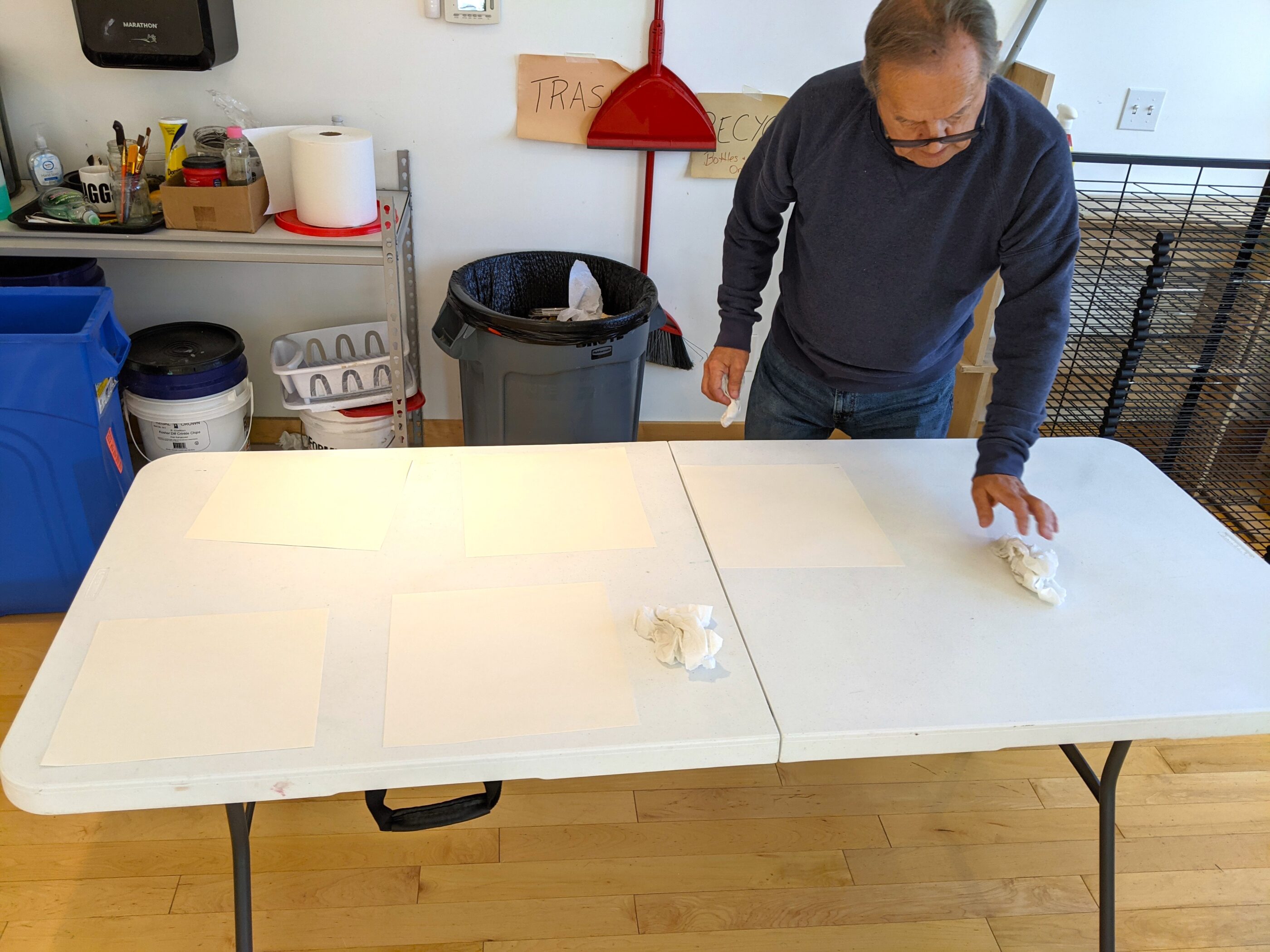 In the following session, Teacher Bray presented a slideshow containing both local and regional Maine landscape artists. In particular, he focused on how each artist in the slideshow used light in their imagery to create depth and perspective. Next, Bray led two lessons, one on how to use earth tone colors to build a painting which led to touching on color theory. “Color theory is the study of how colors work together and how they affect our emotions and perceptions…Color theory enables you to pick colors that go well together and convey the right mood or message in your work.”
In the following session, Teacher Bray presented a slideshow containing both local and regional Maine landscape artists. In particular, he focused on how each artist in the slideshow used light in their imagery to create depth and perspective. Next, Bray led two lessons, one on how to use earth tone colors to build a painting which led to touching on color theory. “Color theory is the study of how colors work together and how they affect our emotions and perceptions…Color theory enables you to pick colors that go well together and convey the right mood or message in your work.”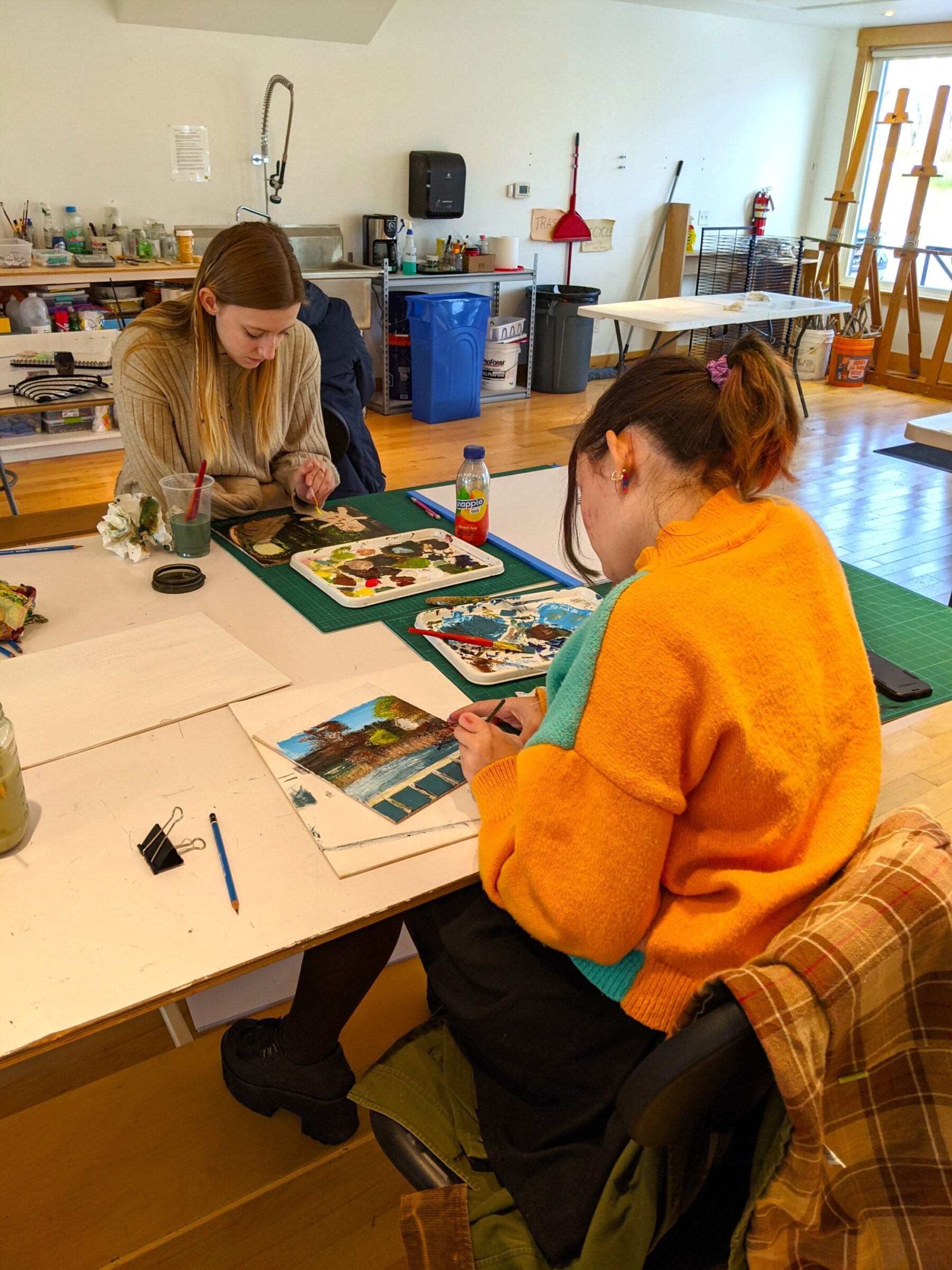 After this lesson and after the gesso panel prep from the previous session had dried, students then began painting on them, incorporating both the sketches and lessons that were fresh in their minds.
After this lesson and after the gesso panel prep from the previous session had dried, students then began painting on them, incorporating both the sketches and lessons that were fresh in their minds.

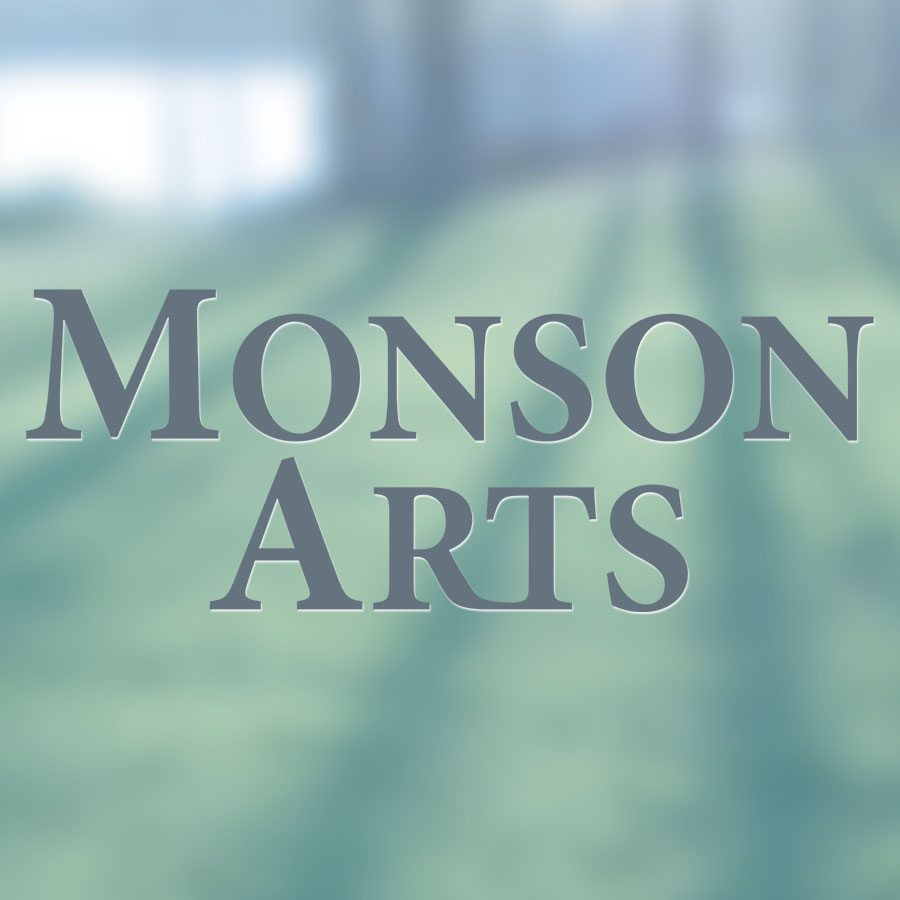 Time and space to create.
Monson Arts is a new artists’ residency and arts center in Monson, Maine. Programs include residencies for artists and writers, intensive shorter workshops, and educational partnerships with area secondary schools.
Time and space to create.
Monson Arts is a new artists’ residency and arts center in Monson, Maine. Programs include residencies for artists and writers, intensive shorter workshops, and educational partnerships with area secondary schools.